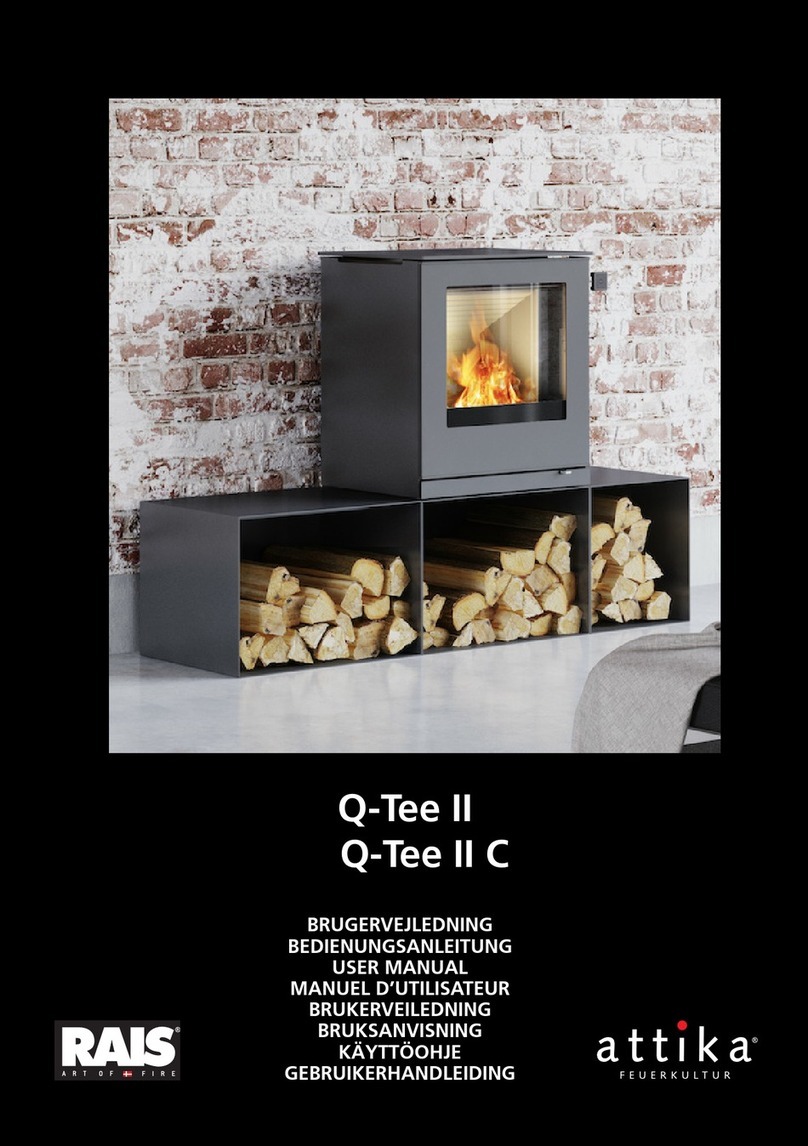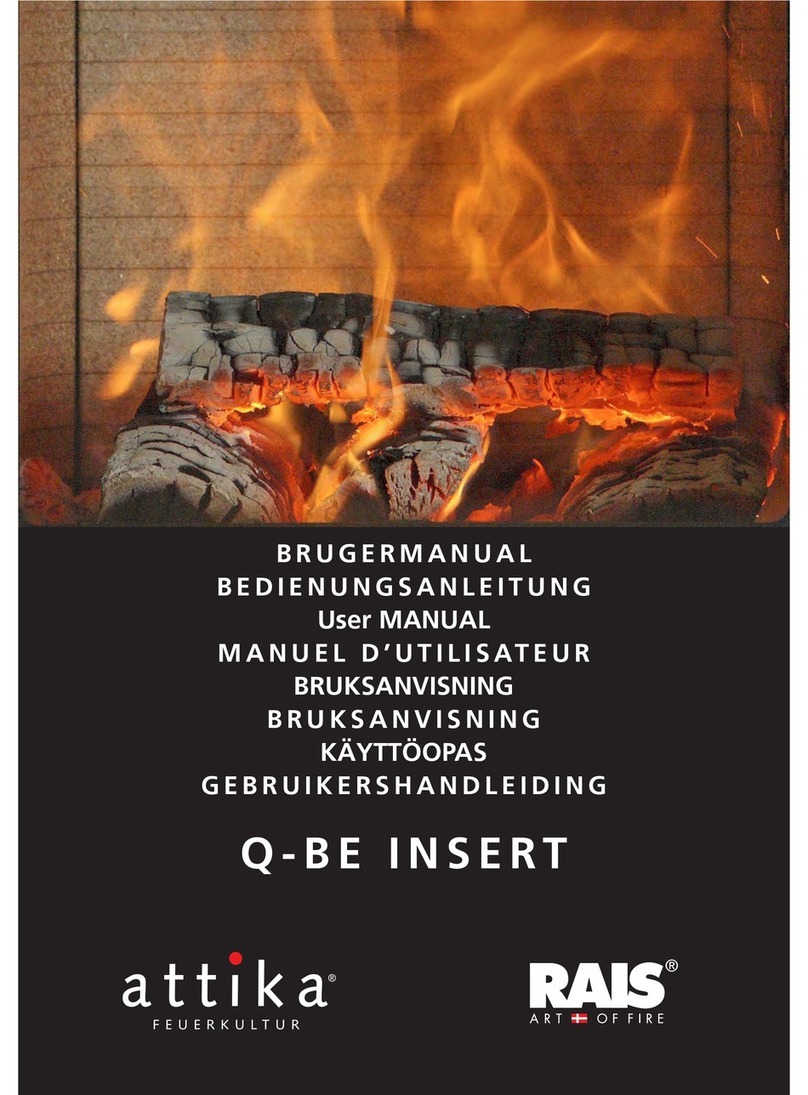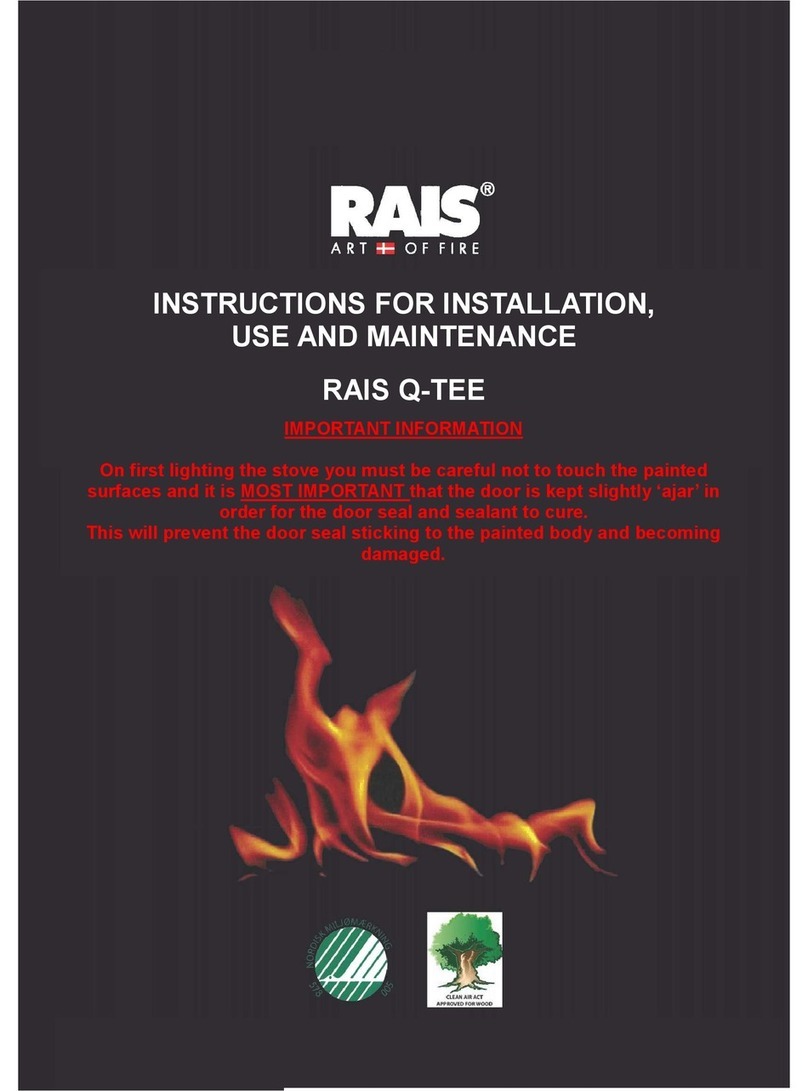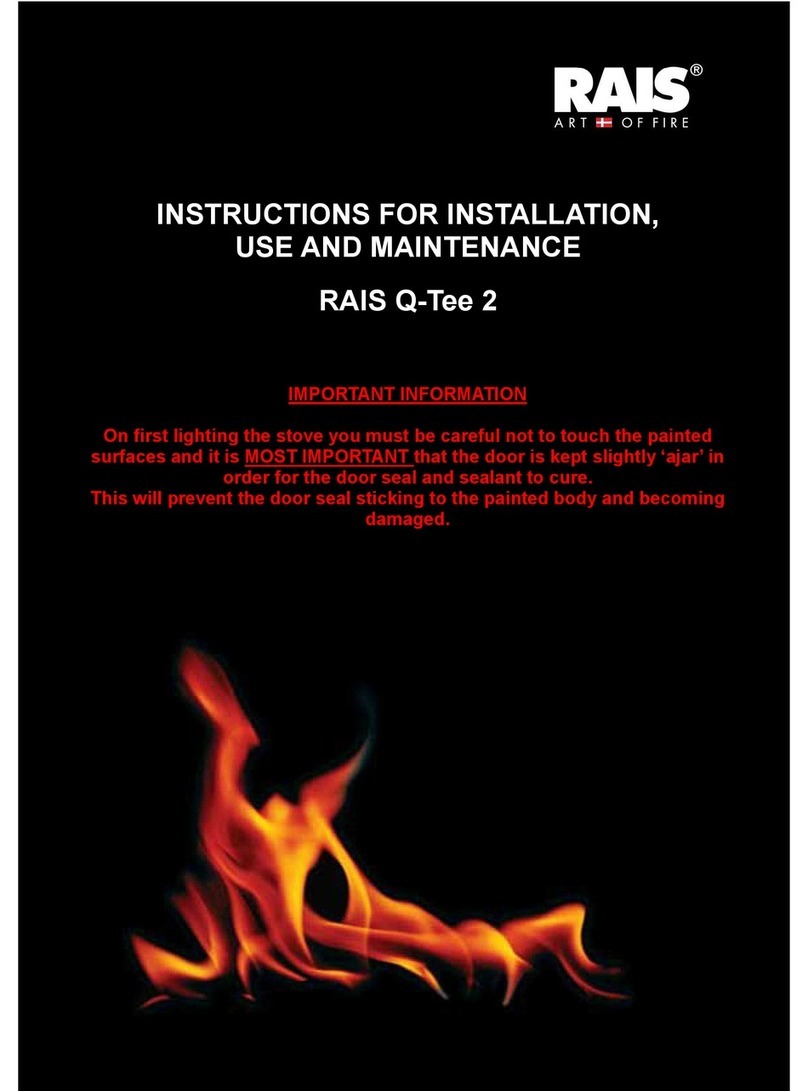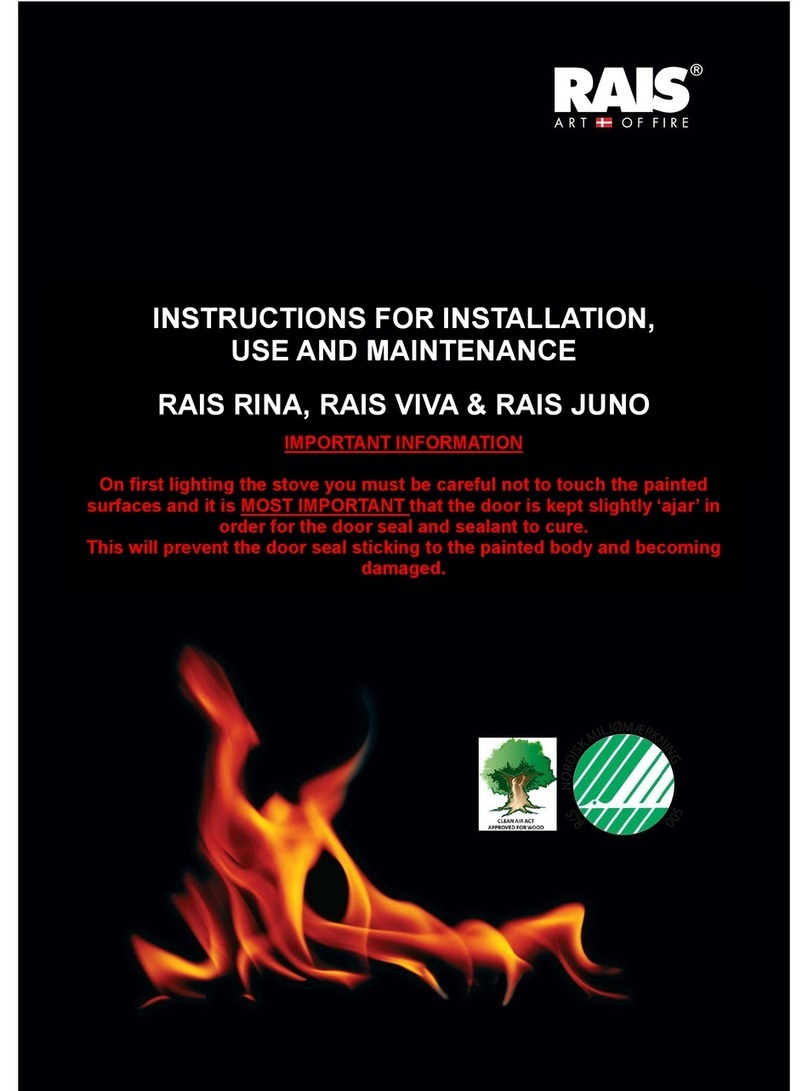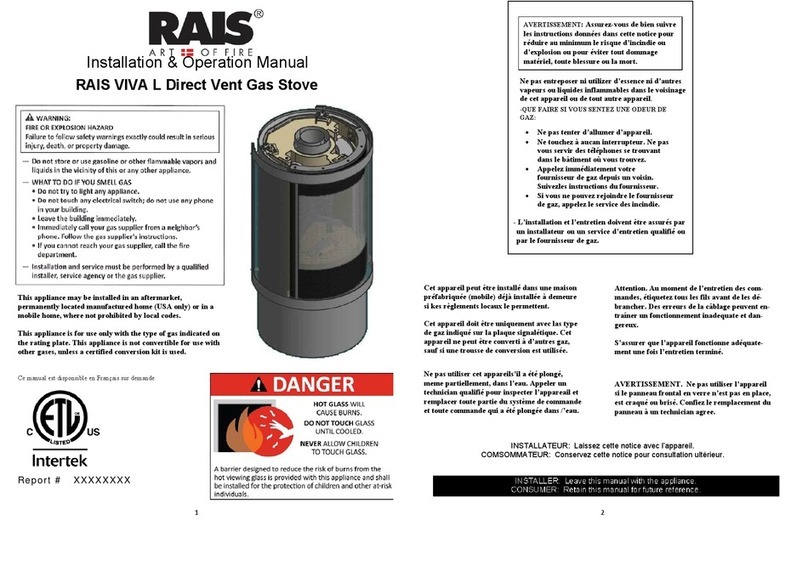Manual for Rais Rina, Rais Viva & Rais Juno
8
September 2013
smokeless fuels or exempt appliances for use in smoke control areas in En land. In Scotland and Wales
this power rests with Ministers in the devolved administrations for those countries. Separate le islation, the
Clean Air (Northern Ireland) Order 1981, applies in Northern Ireland. Therefore it is a requirement that fuels
burnt or obtained for use in smoke control areas have been "authorised" in Re ulations and that appliances
used to burn solid fuel in those areas (other than "authorised" fuels) have been exempted by an Order
made and si ned by the Secretary of State or Minister in the devolved administrations.
Rais Q-Tee, Rina, Vi a, Juno, 500, 900, Epoca II, Poleo II, 900 and Q-Tee II
These have been recommended as suitable for use in smoke control areas when burnin wood. The Q-Tee
models are fitted with a mechanical stop to prevent air closure beyond the 11.7mm open position. Note this
stop is factory fitted. The Q-Tee II model (only) is also approved for use with approved mineral fuels.
Further information on requirements of the Clean Air Act can be found at: http://smokecontrol.defra. ov.uk/
Your local authority is responsible for implementin the Clean Air Act 1993 includin desi nation and su-
pervision of smoke control areas and you can contact them for details of Clean Air Act requirements
Special Notes for use in a Smoke Control Area:
Refuelling on to a low fire bed:
If there is insufficient burnin material in the firebed to li ht a new fuel char e, excessive smoke emission
can occur. Refuellin must be carried out onto a sufficient quantity of lowin embers and ash that the new
fuel char e will i nite in a reasonable period. If there are too few embers in the fire bed, add suitable
kindlin to prevent excessive smoke
Fuel o erloading:
The maximum amount of fuel specified in this manual should not be exceeded, overloadin can cause
excess smoke.
Operation with door left open:
Operation with the door open can cause excess smoke. The appliance must not be operated with the
appliance door left open except as directed in the instructions.
Dampers left open:
Operation with the air controls or dampers open can cause excess smoke. The appliance must not be
operated with air controls or dampers left open except as directed in the instructions.
Periods of Prolonged Non-Use
If the stove is to be left unused for a prolon ed period of time then it should be iven a thorou h clean to
remove ash and unburned fuel residues. To enable a ood flow of air throu h the appliance to reduce con-
densation and subsequent dama e, leave the air controls fully open.
Extractor fan
There must not be an extractor fan fitted in the same room as the stove as this can cause the stove to emit
smoke and fumes into the room.
Aerosol sprays
Do not use an aerosol spray on or near the stove when it is ali ht.
Use of operating tools
Always use the operatin tools provided when handlin parts likely to be hot when the stove is in use.
Chimney Fires
If the chimney is thorou hly and re ularly swept, chimney fires should not occur. However, if a chimney fire
does occur turn off the stove immediately and isolate the mains electricity supply (if applicable), and ti htly
close the doors of the stove. This should cause the chimney fire to o out. If the chimney fire does not o
out when the above action is taken then the fire bri ade should be called immediately. Do not reli ht the
stove until the chimney and flueways have been cleaned and examined by a professional.
Permanent air ent
The stove requires a permanent and adequate air supply in order for it to operate safely and efficiently.
In accordance with current Buildin Re ulations the installer may have fitted a permanent air supply vent
into the room in which the stove is installed to provide combustion air. This air vent should not under any
circumstances be shut off or sealed.

